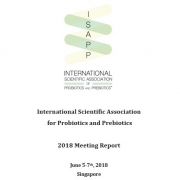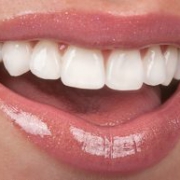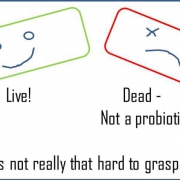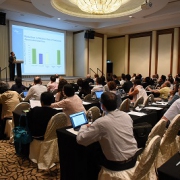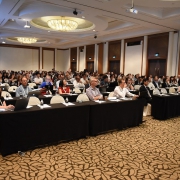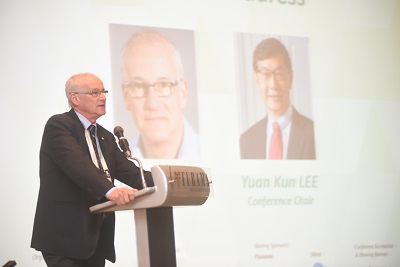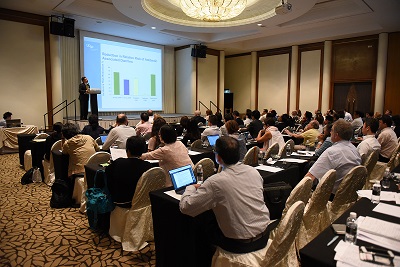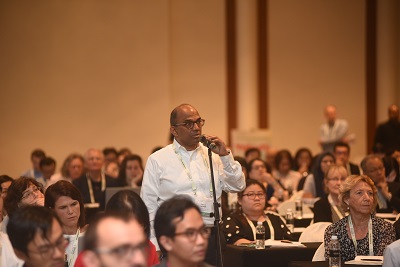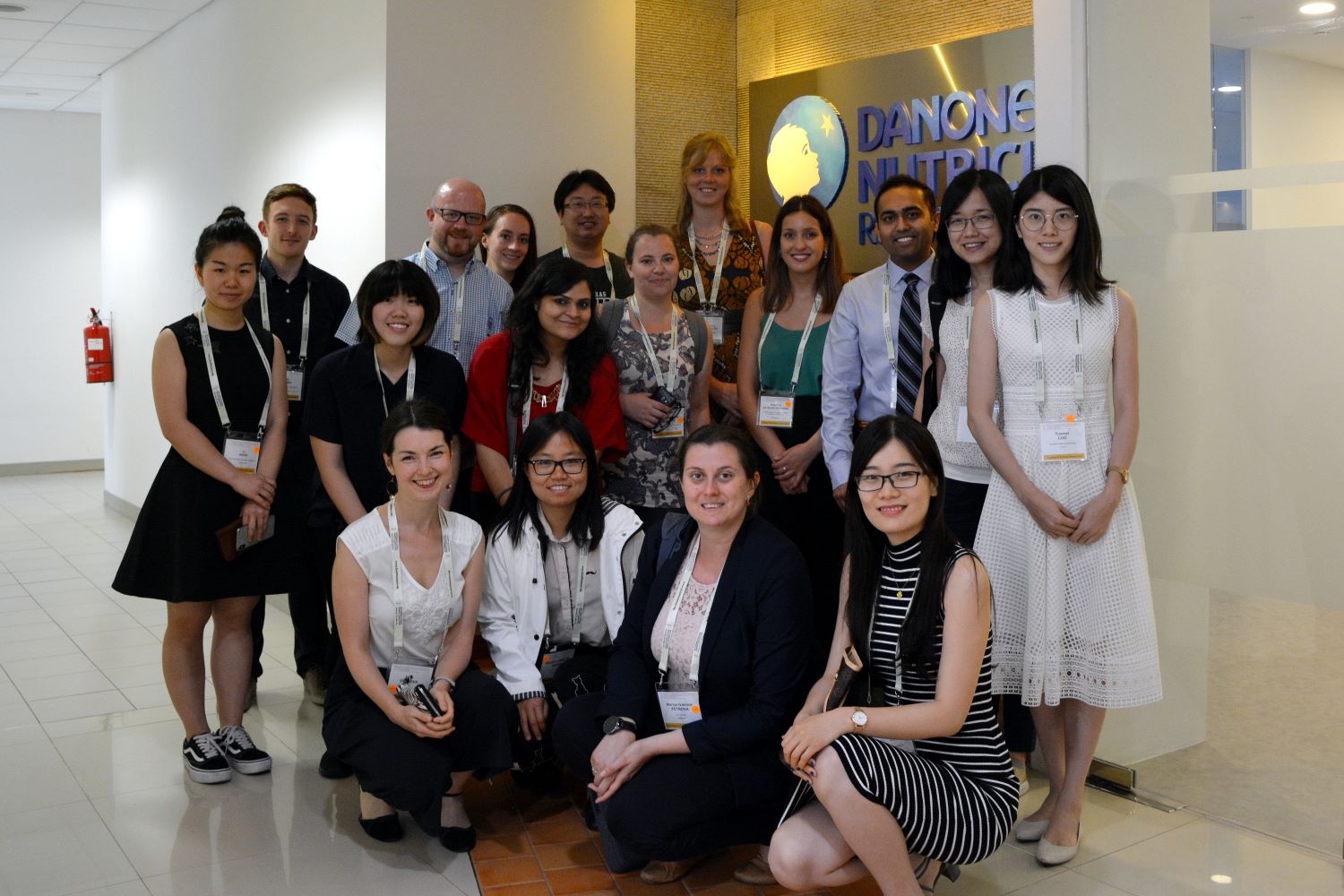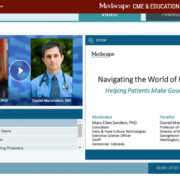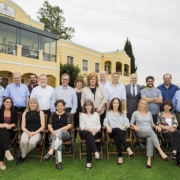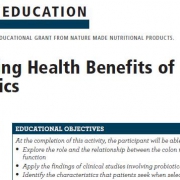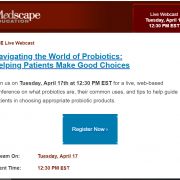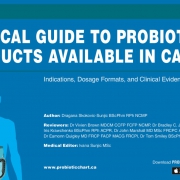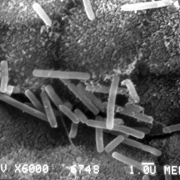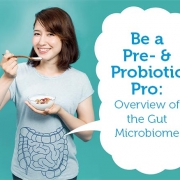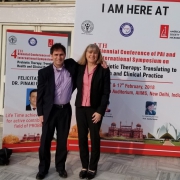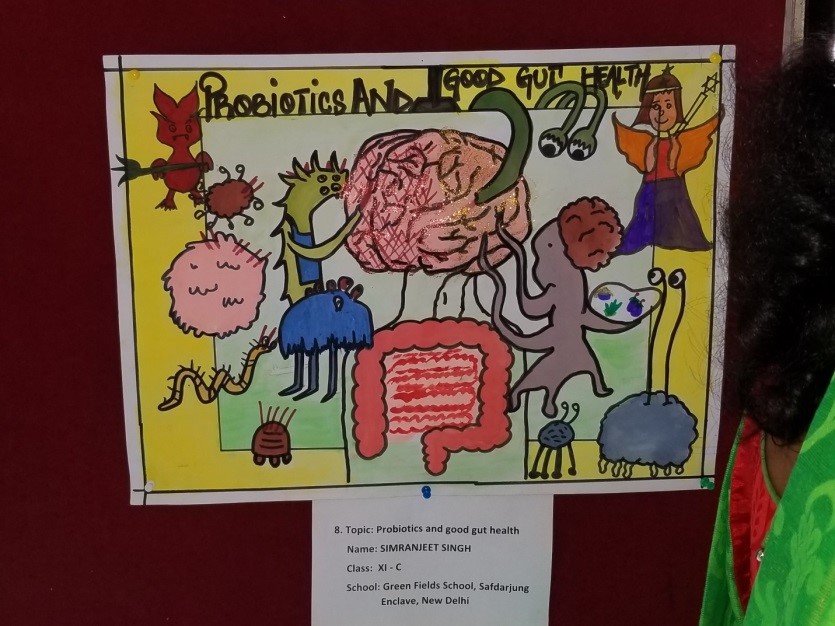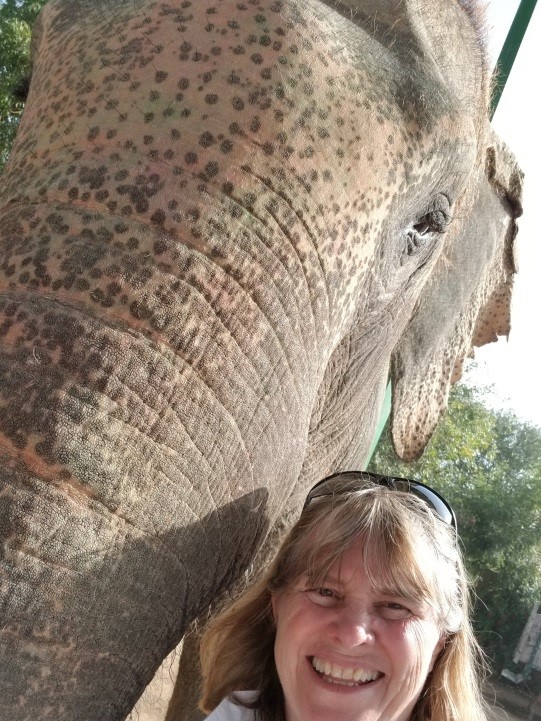By Prof. Glenn Gibson
In just a few days ISAPP will host its first meeting outside of Europe or North America, when we have an open conference in Singapore1,2. There are about 200 registrants and we cannot wait. The meetings are always scientifically informative but fun also. These are main drivers behind our annual jamboree, but this year there is another task…… I am hoping that first timers to ISAPP, and particularly our Asian friends, break with tradition and pronounce the name of the organisation correctly.
I have written one blog in the 56 years of my existence. This first was last year on the various social events we have at the meetings. But this was prior to Chicago in 2017, where we had a bowling alley experience. My PhD student Xueden Wang (Holly) has never let us forget her winning efforts at this:

The above picture and Holly’s endless bragging came to an abrupt end however, when we had our lab Christmas party in December3 – also at a bowling alley this time in Wokingham UK:

Let’s call that revenge of the supervisor shall we? The open top bus parade is now cancelled Holly I am afraid. By the way, if you don’t know what Chicago or Wokingham look like, then both are pictured below. I will leave you to guess which is which:


Anyway, I disgress (justifiably). This is therefore my second blog, and there is a reason for dusting off the quill pen and rehearsing the hieroglyphics once more.
In the last few years ISAPP has published 2 consensus papers, one on probiotics and one on prebiotics4. What we cannot agree on, however, is how to say the name of our esteemed society. Some say ISAPP with the I as “eye”, while others say ISAPP (with the I as in sIt). Admittedly, there is a slight bias in numbers as it is possible to count on the fingers of one finger the number of people who use the latter. It is me. So, that makes about 852 attendees at previous ISAPP meetings incorrect.
Think of the full name of the ISAPP organisation and say it to yourself now…………………
Did anyone say Eye-Nternational? Or did you say International?
At this stage, I should just say that the case for the prosecution is concluded and no further witnesses your honour!
However, let’s look at things a little more closely. If the anarchists, heretics and Eye-Sappers get their way then we may need to change the logo of the organisation to:


We see the letter “I” in front of many things these days such as i pad, i mac , i max, i alex cross, i pod, i robot. A quick search of the internet (or as some say eyeNternet) suggests that the “I” can stand for individual, imagination or internet, but usually refers to intelligent. We might have to live with ISAPP standing for intelligent sapps. Here is a picture of 2 saps:


Still, 852 people can’t be wrong. I’ll put that another way – 852 people are wrong. So the spotlight turns to Singapore to show us the light, the truth and the way forward.
But……. It gets worse. The terms probiotic and prebiotic are not used on products in Europe now as they are an implied health benefit. Let’s put aside that the very body who devised this “rule” have turned down all but about one health claim. If we go along with this puffed up lunacy5 then we might have to call ISAPP:
International Scientific Association for @%?!&.. and @%?!&..
Maybe we can get away with just using the first letters of these disgustingly offensive, abhorrent and abusive terms. So, ISAPP becomes:
International Scientific Association for P@%?!&.. and P@%?!&..
It still does not seem right, so ISAPP becomes:
International Scientific Association for PAP
Now we are getting somewhere, as PAP means “Noun. 1. Nonsense, rubbish. 2. Faeces. Verb. To defaecate. e.g. ‘He was so scared he papped his pants.’.” This embodies exactly what ISAPP is all about and where pro/prebiotics work!!! So, I propose another new logo:

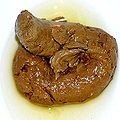
1I’ll be flying there with British Airways. One highlight is always the safety demo where they say “in the unlikely event that the plane should land on water.” I always feel that “unlikely” is not quite definitive enough. If you were to ask at check in about the chances of the 777 landing on water and the reply was “er… well…on balance it is unlikely”, you would probably not board the old crate.
2Travel tip: Always aim for row 13 and upon reaching it say “oh no, me and my luck, I’m in death row again”, it often leads to vacating of the seat next to you.
3Also attended by a group of leading food science researchers, who face such crucial issues as:
- What is there in a chicken that makes an eggshell?
- Why do we not eat turkey eggs?
- Why is marmalade not just called orange jam?
- How is some cheese orange when it made from milk?
- Why are small chocolate bars called “fun size” when they are about half of what they should be?
4By the way, in the olden days (1995) I wanted to call prebiotics parabiotics. Only because MASH was on TV at the time and featured paramedics. So these could be known as biotics that help medics.
5Please note that these opinions are those of the author and do not represent the views of EYESAPP, aside from Gregor.

